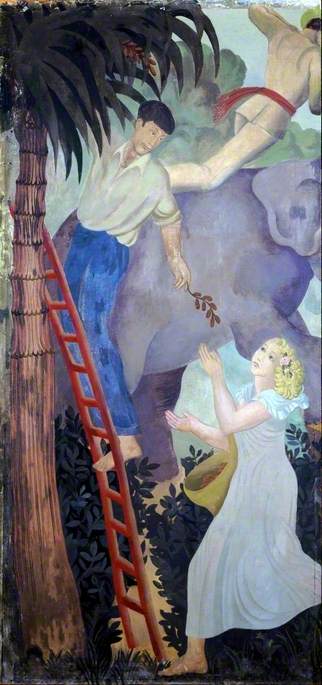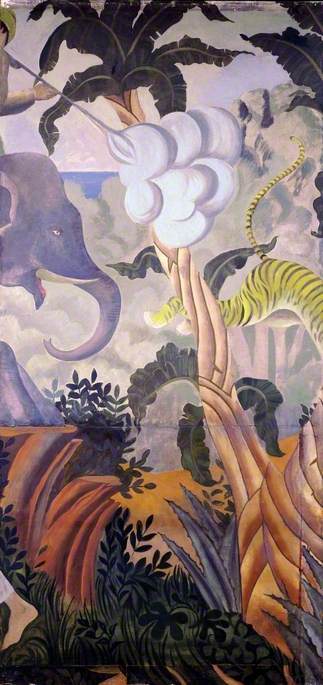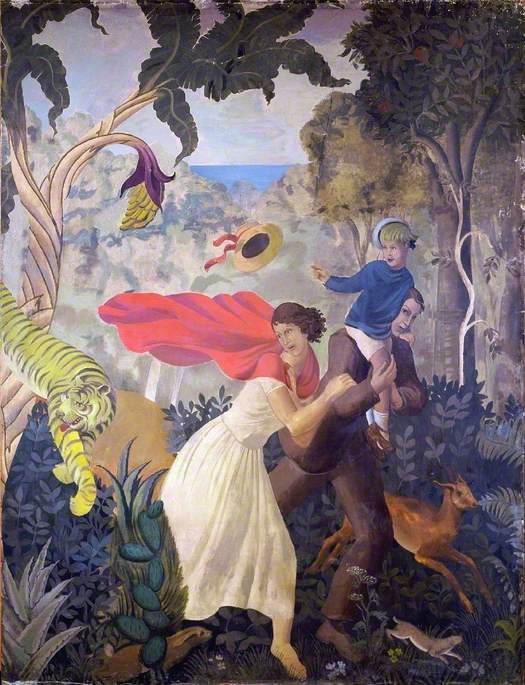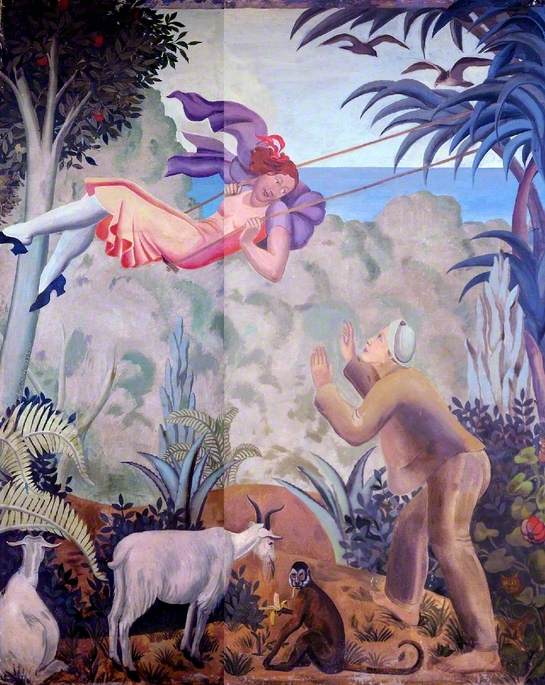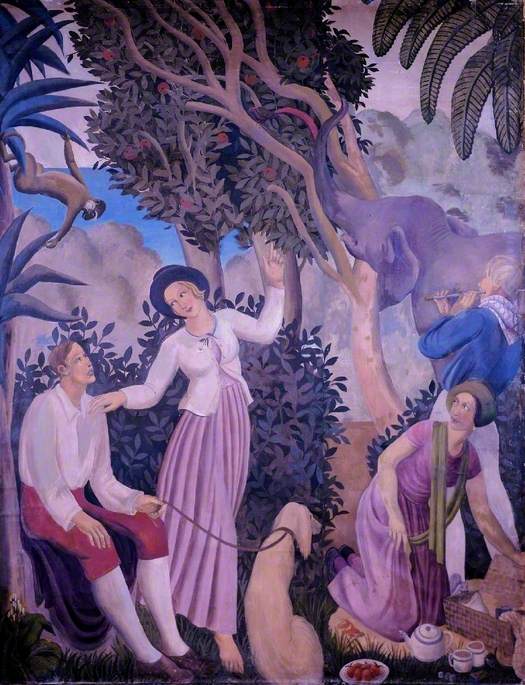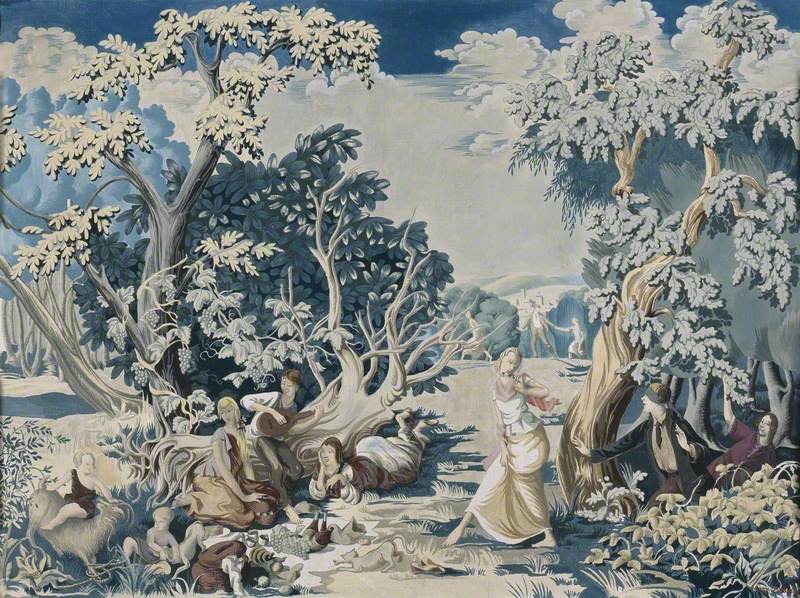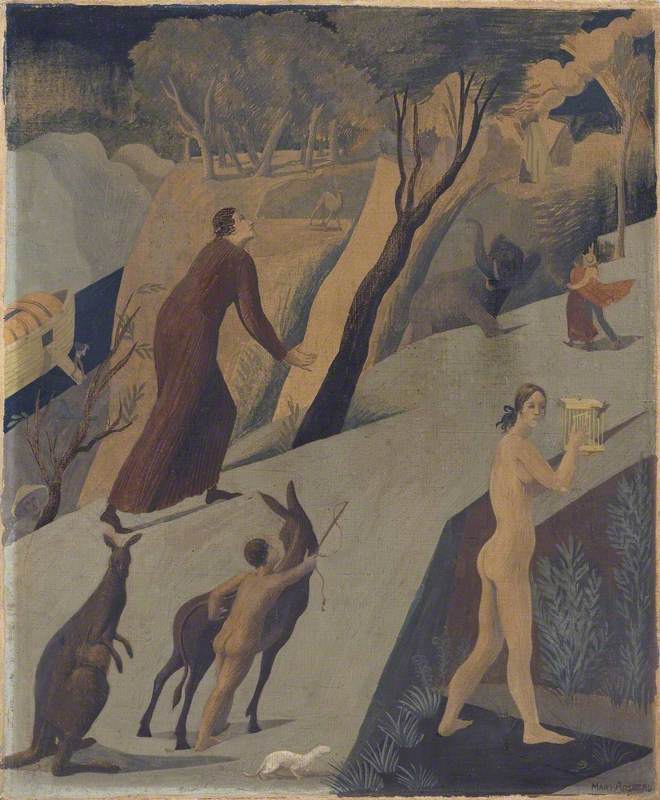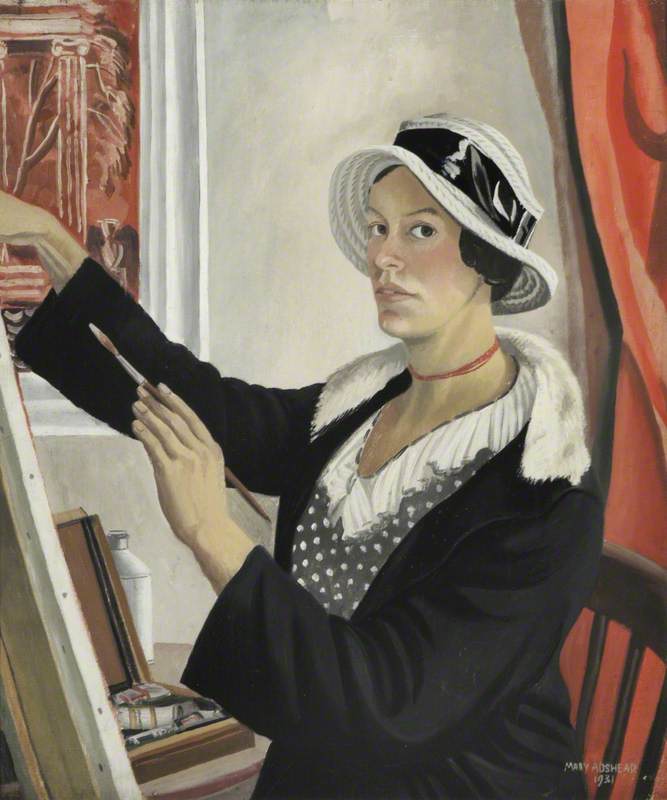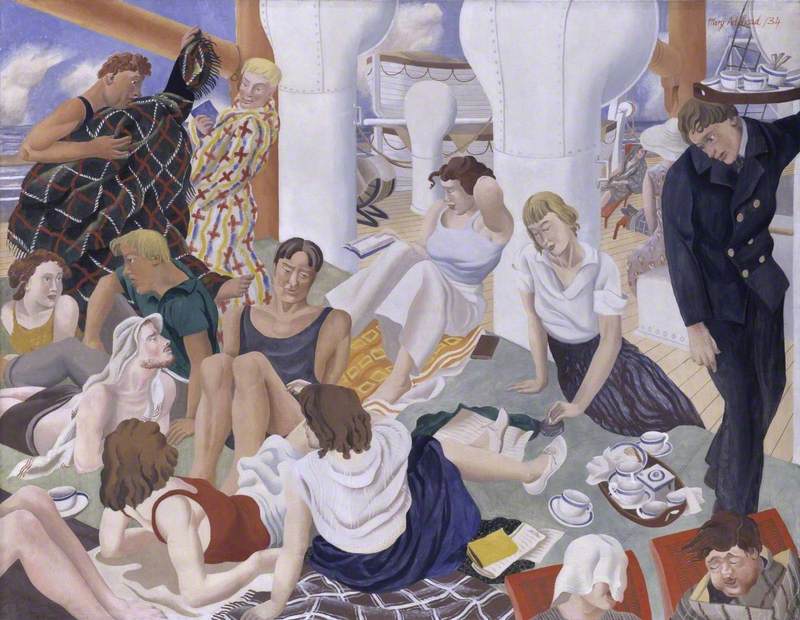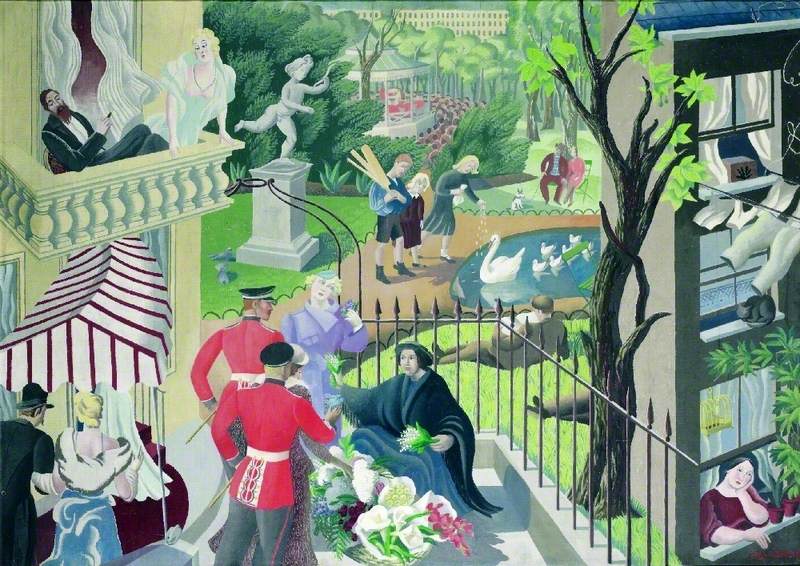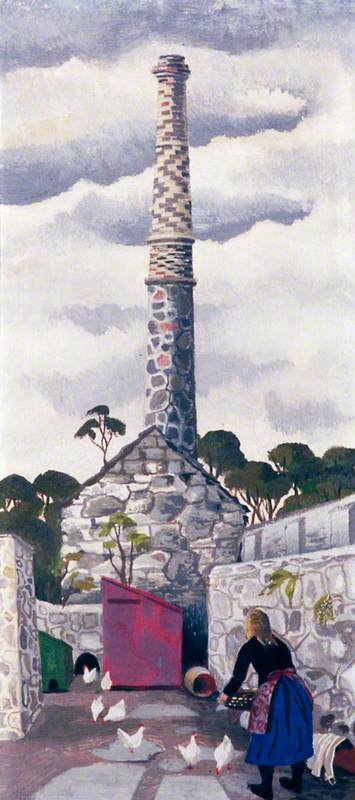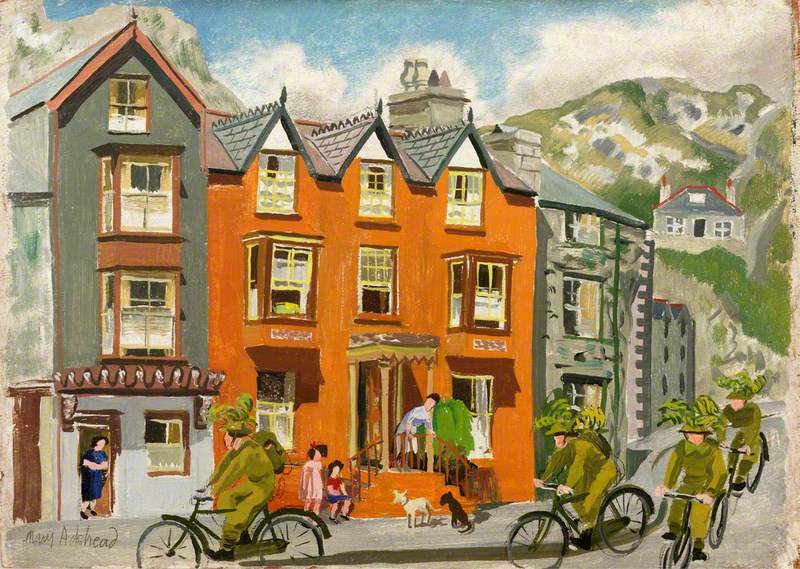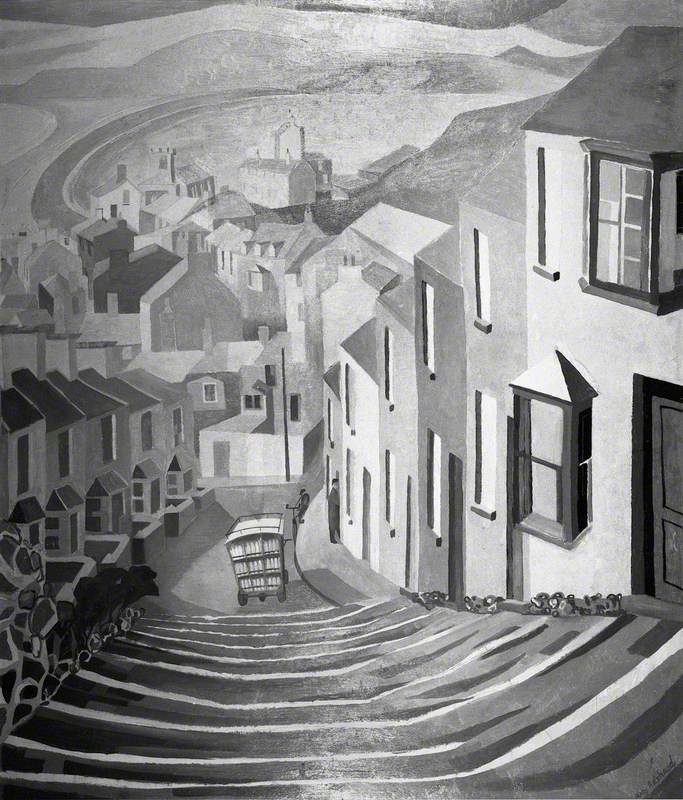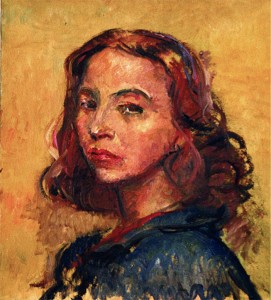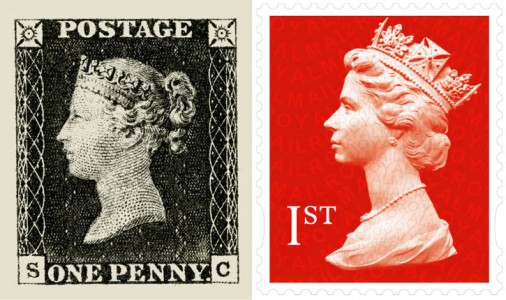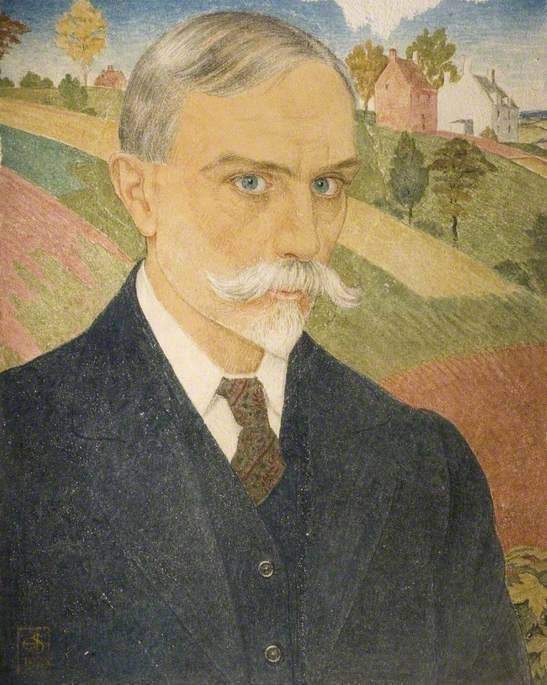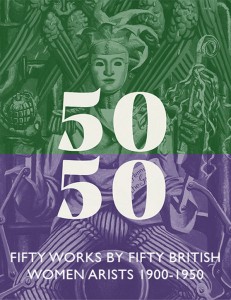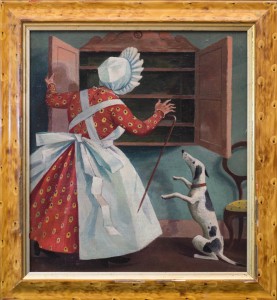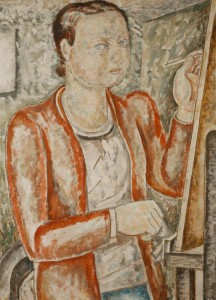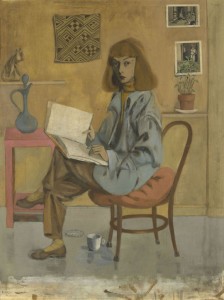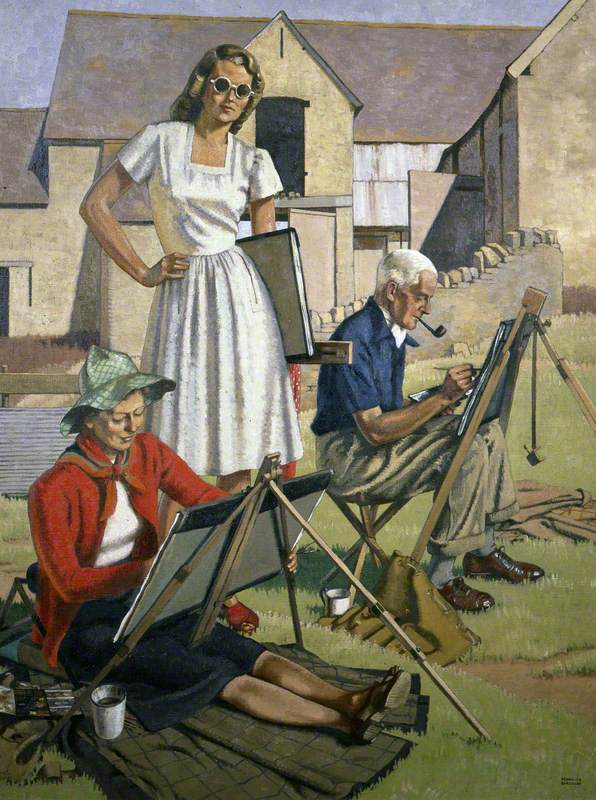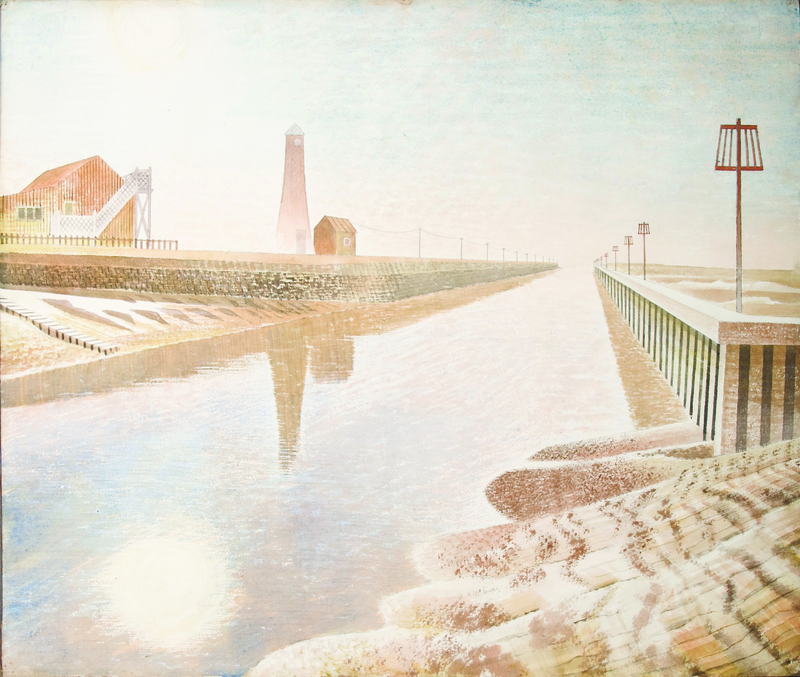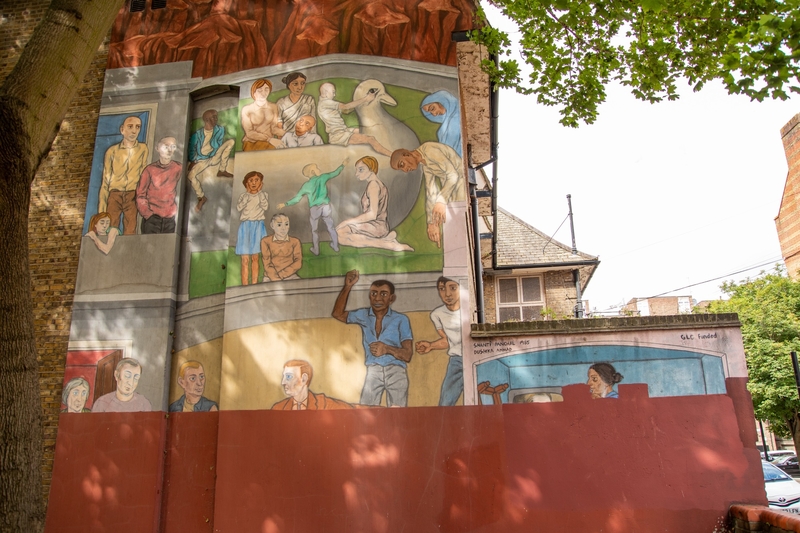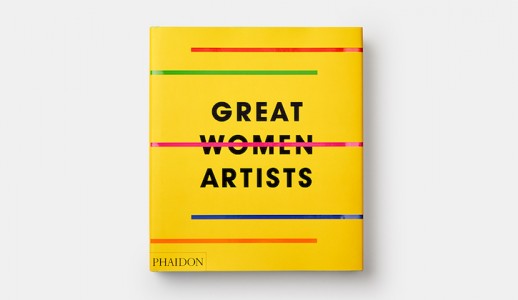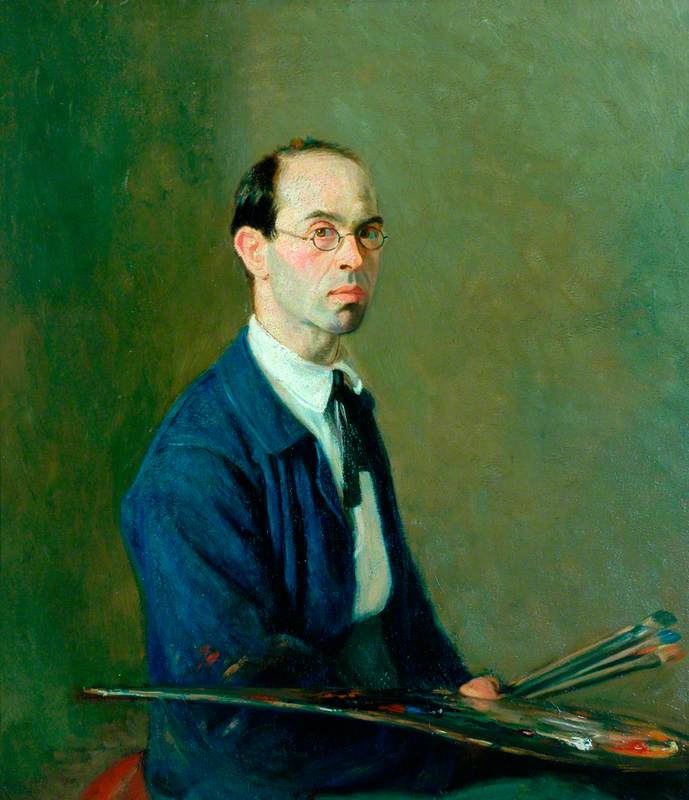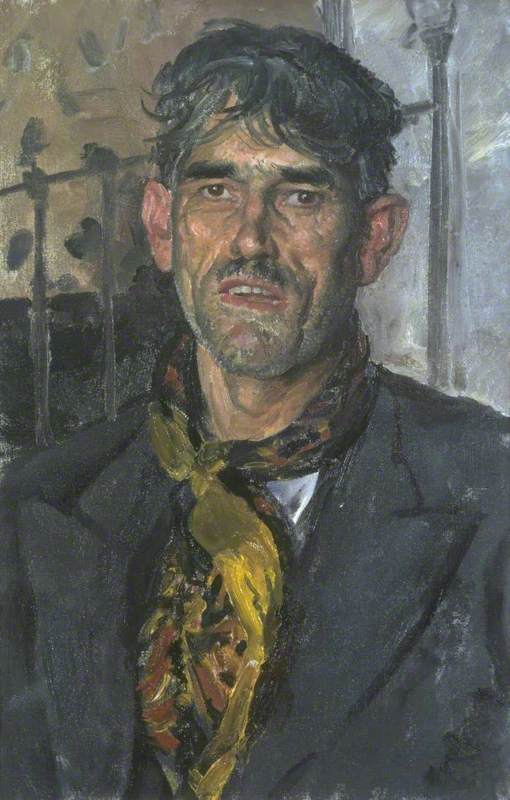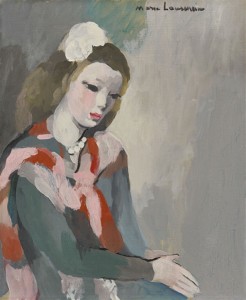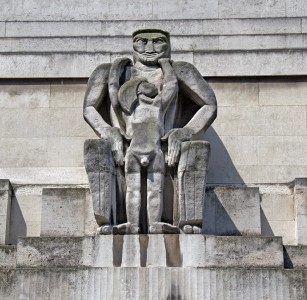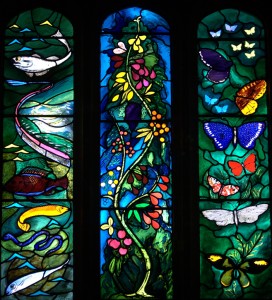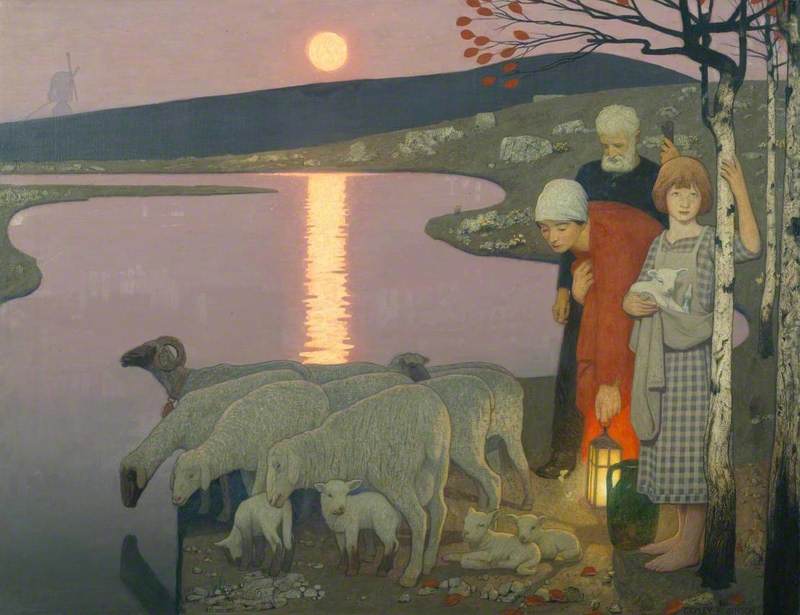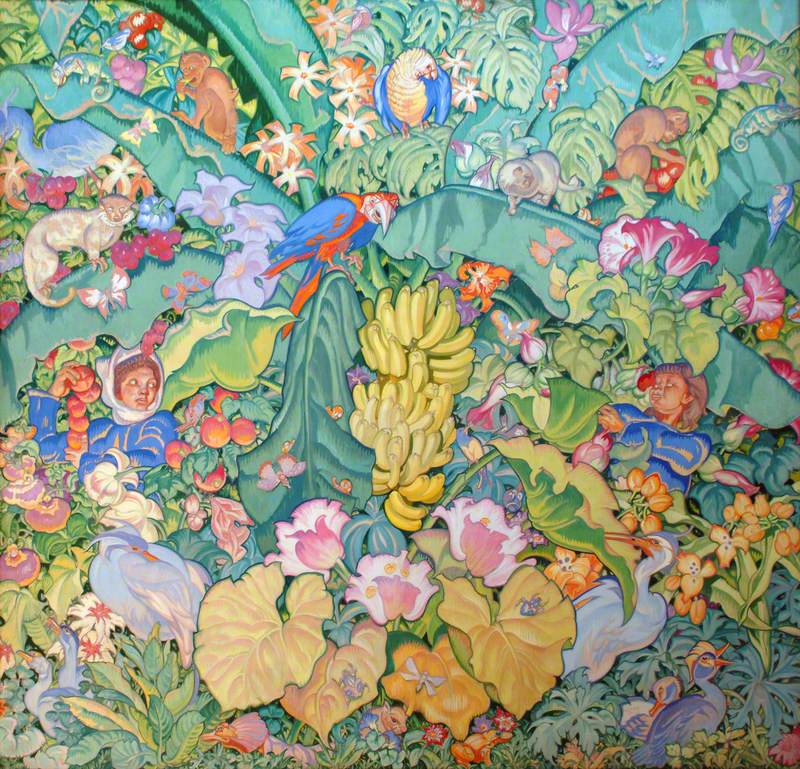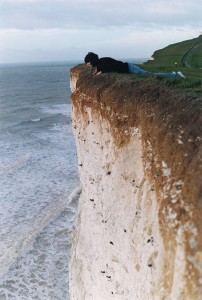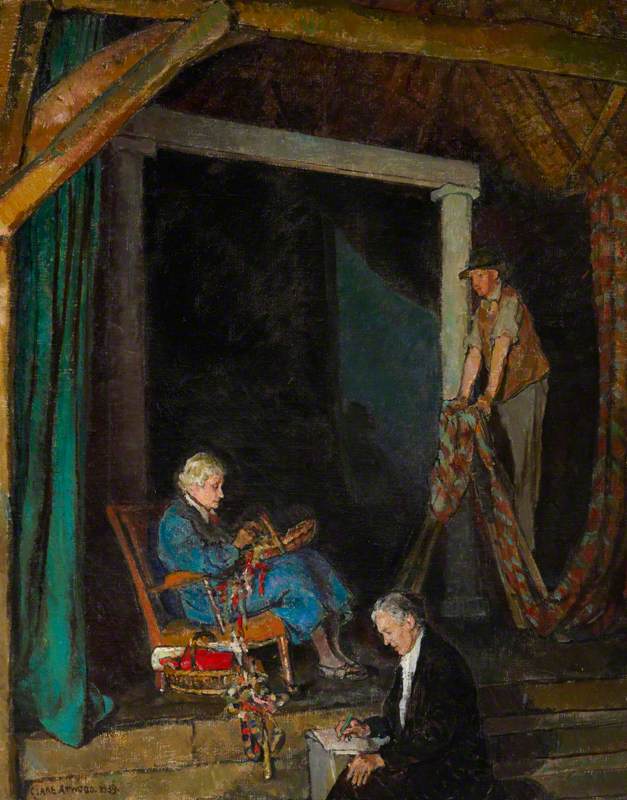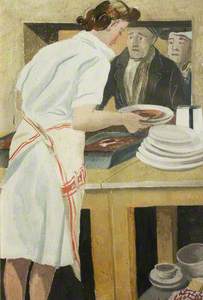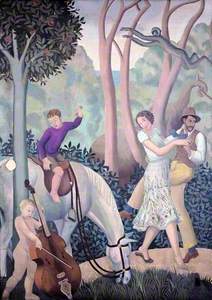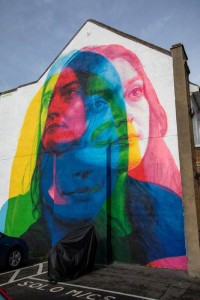Mary Adshead is best known for her work as a muralist, but like many of her contemporaries, she also produced portraits, designed postage stamps, and illustrated books across a career spanning seven decades. The only child of Stanley and Annie Adshead, Mary Adshead was born in Bloomsbury, London, in 1904. While her mother oversaw her education and instilled an interest in gardening, her father was a well-known architect and Professor of Civic Design at the University of London. Stanley taught her watercolour painting and would go on to become the first Professor of Town Planning at University College, London, until retiring in 1935.
As a child, Adshead already had ambitions to train as an artist and was often illustrating stories and drawing cartoons in her sketchbooks. Following six months studying in Paris at the age of fifteen, she returned to London, where she was soon introduced by her father to Henry Tonks, the principal at the Slade School of Fine Art. Initially, Tonks was not overly impressed with Adshead's portfolio, but was persuaded to be given a place on the course thanks to her father.
From 1921 to 1924, Adshead studied under Tonks at the Slade. Although Tonks was notorious for his severity and harsh approach, he took notice of Adshead's skill and work. In the year she graduated, Adshead won joint first prize in the Slade's Summer painting competition, along with Rex Whistler. That same year, Tonks chose both Adshead and Whistler to work together on a mural commission at the Highways Club, Shadwell, London.
Not long after, the pair were asked by Charles Reilly, the professor of architecture at Liverpool University (and a former colleague of Mary's father) to decorate his dining room. Known as A Tropical Fantasy, the mural is made up of six colourful panels depicting an array of figures and animals within a desert island setting. They are filled with music, dancing and a comical narrative. You can see the panels at the top of this piece.
More murals would follow, including The Housing of the People shown in the 1924 British Empire Exhibition held at Wembley, and An English Holiday, a commission by Lord Beaverbrook (known as the 'first baron of Fleet Street') completed in 1928.
Designed for the Canadian-British politician and business tycoon's dining room at his residence in Suffolk, the mural comprises eleven scenes which the Architectural Review described as being in 'the manner of English eighteenth-century sporting prints and aquatints'.
Unfortunately the panels were never installed, following advice given to Lord Beaverbrook by his friend Lady Diana Cooper. While she herself was depicted in one of the panels, Lady Diana suggested to the Lord that it would not be a good idea to have the faces of friends and acquaintances (who feature as characters, such as Winston Churchill riding an elephant) surrounding his dining room in case of any potential quarrels. Eventually, the panels were exhibited at the Peter Jones department store in Sloane Square, London, in 1930.
Adshead began to exhibit work regularly at the Royal Academy from 1927 and had already taken part in the 'Applied Art' exhibition at the Whitechapel Art Gallery the previous year. At about the same time she produced poster designs for London Underground, including decorations for Bank and Piccadilly Circus stations.
From the mid-1930s Adshead exhibited frequently at the Women's International Art Club, where she would later serve on the committee in 1951. This followed her first solo show in 1930 at the Goupil Gallery, London, the same year Adshead was elected a member of the New English Art Club.
Morning after the Flood (1928), now part of the Tate collection, was one of the works included in the show and depicts members of Noah's Ark following the flood. Not only does this painting hark back to Adshead's training at the Slade, where Tonks set tasks using Biblical scenes, but it also features a witty mixture of figures and wild animals (in this case, a camel, elephant and kangaroo) that denote her distinctive style.
In 1929, Adshead married fellow artist Stephen Bone, son of the acclaimed printmaker and draughtsman Sir Muirhead Bone. The couple had met while both studying at the Slade and alongside their many painting tours of Europe, Adshead and Bone would collaborate on three illustrated children's books over the next 20 years: The Little Boy and His House (1936), The Silly Snail and Other Stories (1942) and The Little Boys and Their Boats (1953).
Adshead's 1931 self-portrait shows a tenacious, yet stylish artist at work. Her short bob is covered by a black-and-white hat which matches her spotty dress and fur-collared coat. Adshead is also wearing a red choker that complements elements in the background. It is worth noting that Adshead painted this portrait the same year her first child was born. She would have two more while continuing to take commissions from Cunard, the 1937 Paris International Exhibition, Vauxhall Motors, Selfridges and Colwyn Bay Urban District Council.
Adshead also continued to paint on canvas and in The Cruise (1934) she depicts a teatime scene aboard an ocean liner crammed with people. Someone appears to struggle with their tartan picnic blanket, while a figure in the bottom right-hand corner has covered their face with a handkerchief. Adshead perfectly captures the whimsical frivolity of the middle classes at leisure in the 1930s.
During the Second World War, Adshead designed murals for the Service Men's Club and the British Restaurant in Birmingham. The British Restaurants scheme was introduced following the Blitz and provided affordable meals for those on low incomes, whose homes had been destroyed by bombing and/or who had run out of ration coupons. By 1943, more than 2,000 restaurants across the country were serving over half a million meals per day. Adshead's 1941 painting British Restaurant, Coventry, After Dinner shows the interior of a British Restaurant and its communal, canteen-like atmosphere.
Grace at the 'Sausage Hatch', British Restaurant, Coventry
c.1940
Mary Adshead (1904–1995) 
A similar environment is depicted in another of Adshead's paintings, Grace at the 'Sausage Hatch', British Restaurant, Coventry from the same period. A female volunteer can be seen serving a meal to a distressed-looking man. One wonders just how many others like him are queueing behind.
From 1949, Adshead produced stamp designs for the General Post Office including that year's Universal Postal Union stamps, the Festival of Britain stamp of 1951 and four denominations of the Wilding definitive stamps of 1952. Designs by Enid Marx, Edmund Dulac, Michael Farrar-Bell, and George Knipe were also selected. However, she continued to advocate for the practice of mural painting by being Secretary of the Society of Mural Painters throughout the 1950s and 1960s.
Following Bone's death in 1958, Adshead travelled across Europe and the United States, in addition to painting set designs for Cleopatra released in 1963 and starring Elizabeth Taylor.
She studied mosaic design and techniques at Ravenna and in Sicily, and upon her return to England, she published Travelling with a Sketchbook: A guide to carry on a first sketching holiday (1966), as well as using mosaic, stones and marble to produce a decorative pool in the Telephone Exchange Courtyard, Guernsey. One of Adshead's final public works were murals for a pedestrianised subway in Rotherhithe, London, made in 1983.
Although many of her murals have not survived, Adshead's work is held in several national public collections, such as Tate, Imperial War Museum, Manchester City Art Gallery, and London Transport Museum.
A solo show celebrating Adshead's oeuvre was hosted by Sally Hunter & Patrick Seale Fine Art in 1986 and 1989, while a retrospective toured the country in 2005. She was described in her obituary in The Independent as having 'an unwavering confidence in her own ability' and not being 'cast down by disappointment'. Perhaps it is with this conviction and spirit that we continue to celebrate Adshead's prolific career and establish her place within art history.
Victoria Rodrigues O'Donnell, freelance writer

